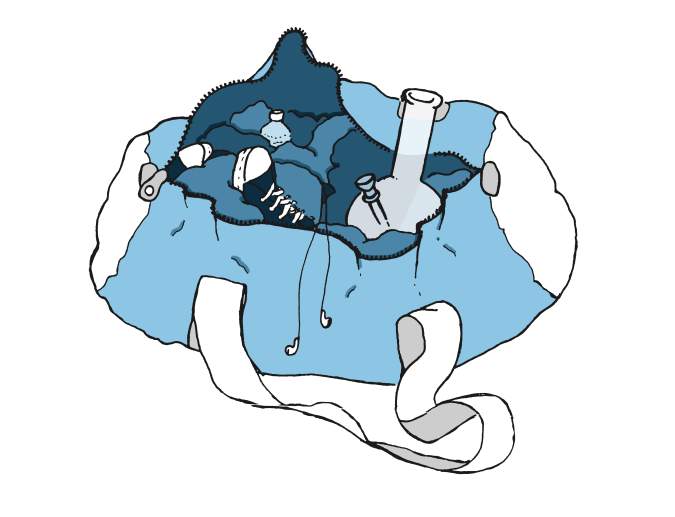Generating tax revenue and saving money on prosecutions—what’s not to love?
The numbers for the first year of legal cannabis sales in Washington are in, and it’s a bong-half-full situation. Headlines about the tax revenue from weed have ranged from “Rakes in Millions” to “predicted bonanza not materializing.” The fact is, sales brought $70 million dollars to the state’s coffers (off $260 million in sales, through June), which, while perhaps not what analysts had hoped for, isn’t a poke in the eye with a sharp stick, either.
Fact is, legalization in the Evergreen State is a ground-breaking experiment, with absolutely no prior information on what the hell retail marijuana looks like. “Forecasters” (including campaigners originally hyping Initiative 502) made predictions because lawmakers and the public wanted some idea of what we were getting into. Estimates ranged from $75 to $500 million in sales, and the state’s original cannabis tax revenue forecast was $35 million for the first year—which we doubled. If ya had your allowance or salary doubled, you’d be jumping for joy. Here’s what we do know:
It took the Liquor Control Board a helluva long time to begin licensing stores, and even longer to get its own name right (now the Liquor and Cannabis Board). While 161 recreational stores are now open, that’s less than half the number that should be operational by now.
The licensed retailers that are open also had competition from medical dispensaries—though the legislature recently wiped out that competition with the ignorant and oppressive Bill 5052. First-year sales also weren’t helped by hundreds of right-wing local jurisdictions that put moratoriums and overly restrictive zoning rules on our legally approved pot businesses.
What has been proven is that, once we know where to buy our legal herb, we head there in droves and buy the place out. The first month of legal pot, July 2014, saw $3.3 million in sales and $840,000 in taxes; by June 2015, we had $43 million ringing into the cash registers (average $1.5 million a day), and $10.8 mil in taxes. In the end, Washington collected $20 million more in taxes from our rec weed than Colorado did in its first year. Green. Rush.
The price of (legal) marijuana has also jumped all over the board. At first, there was barely any supply (go figure, the weed needed to grow before we could smoke it), so prices were sky high, hitting $30 a gram. As expected, as more retailers got the green light and more ganja hit the shelves, prices dropped significantly, to about $13 a gram. Businesses sold more than 22,000 pounds of cannabis in the first 12 months, as well as 700,000 marijuana-infused cookies and elixirs and suckers and taffy. The harvest was six million square feet of plant canopy, producing almost 60,000 pounds. And that’s just the legal stuff—which experts estimate is only 10 to 15 percent of what’s actually grown. (Damn black market . . . we just can’t quit you.)
Another factor has been the tax structure—previously a brutal three-tiered excise-tax sandwich that hit farmers, processors, and retailers with a 25 percent tax for each transaction, making it hard for any of them to make a profit (especially after Uncle Sam takes his cut at the federal level, while still claiming that drug money is a felony). The legislature just changed the law to a still-high-but-not-deadly 37 percent tax upon purchase, which takes effect this month. With the customer paying the entire tax, stores get a break by not having to claim revenue as income on federal filings.
The true tale of legalization, though, isn’t illustrated by dollars and cents, but by the public’s well-being. According to a survey of more than 25,000 students, teen drug use did not rise in 2014, nor did the number of teens killed in car crashes. Violent crime is down (at a 40-year low). Arrests in pot cases are plummeting (down 98 percent!), because it’s legal (duh) and—more important—possession bookings aren’t taking cops off the beat or their eyes off more serious crimes. We’re also saving a boatload that used to go toward weed prosecutions. Oh, and we like the new law: While the same percentage that voted for legalization support it after a year (56 percent), only 37 percent now oppose the idea—a decrease of seven points since the election. Seventy-seven percent of us think marijuana’s legalization has had no impact or a positive one. In other words: It’s all good (man).
The Federal government did not crash the party. The sky did not fall—it revealed a green rainbow which grew into the fastest-growing industry in the entire country. Our citizens weren’t running around “hopped up on dope,” and legalization didn’t ruin lives or the economy, which may be part of the reason Oregon, Alaska, and D.C. have since followed our lead and legalized ganja themselves.
Given 100 years of reefer madness and fear-mongering on the subject, the headlines should have read “First Year of Legal Devil’s Weed Leads to Zero Deaths and Minimal Mayhem or Drug-Crazed Abandon.” Maybe we’ll get to all that in Year Two.





